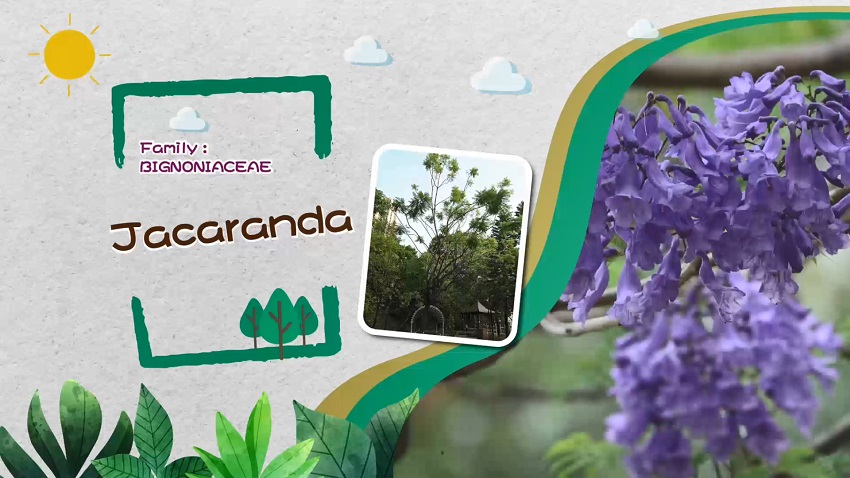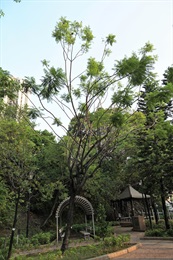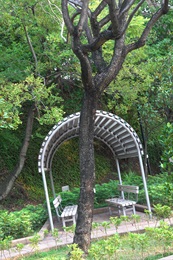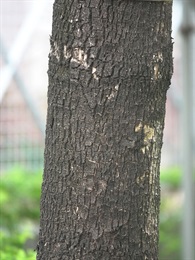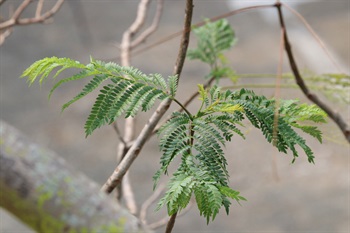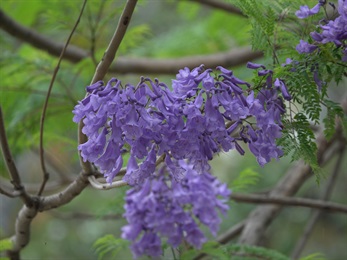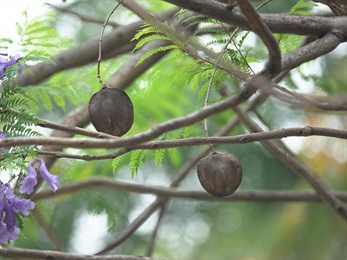| Origins | Brazil, Bolivia and Argentina. |
|---|---|
| Applications | The Jacaranda has lush branches and leaves, and its canopy has clear visible layers. Entering the flowering period, the tree is dyed purplish-blue by its flowers, whose endless blooms mimic brocade and lend to its popularity in being planted as street trees and gardening plants in the tropical and subtropical regions. Furthermore, the wood of the Jacaranda is light and soft, easy to be processed, and has a straight grain, which can be used as the raw material for furniture. |
| Similar species | Jacaranda has the name “Blue-flower Pillar (藍花楹)” in Chinese, can be compared with the Flame Tree, which is also known as “Red-flower Pillar (紅花楹)” in Chinese. Their appearances are similar, and if neither flowers nor fruit are present, it is easy to confuse them without careful observation. The compound leaves of the Jacaranda are shorter, about 15 to 30 cm, while the compound leaves of the Flame Tree are longer, around 20 to 60 cm. The leaflets on each pinna of the Jacaranda are odd numbers, with the leaflets narrowly elliptic, with “pointed tips”, and the margin slightly curled; the leaflets on each pinna of the Flame Tree are even numbers, with the leaflets oblong, with obtuse apex, and uncurled margin. As the Chinese names imply, the flowers of the Jacaranda are purplish blue, while the flowers of the Flame Tree are bright red. While the petals of the Jacaranda are fused into a funnel shape, the petals of the Flame Tree are separated and clawed (narrowed base of petal). The fruit of the Jacaranda is relatively small, as a flat round capsule, akin to a bell; the fruit of the Flame Tree is huge comparatively, which the pod is in length similar to an arm of human. Although these two species share similar appearance, they are different plants indeed. The Jacaranda belongs to Bignoniaceae, while the Flame Tree belongs to Caesalpiniaceae, thus the phylogenetic relationship between the two are rather separated. |
